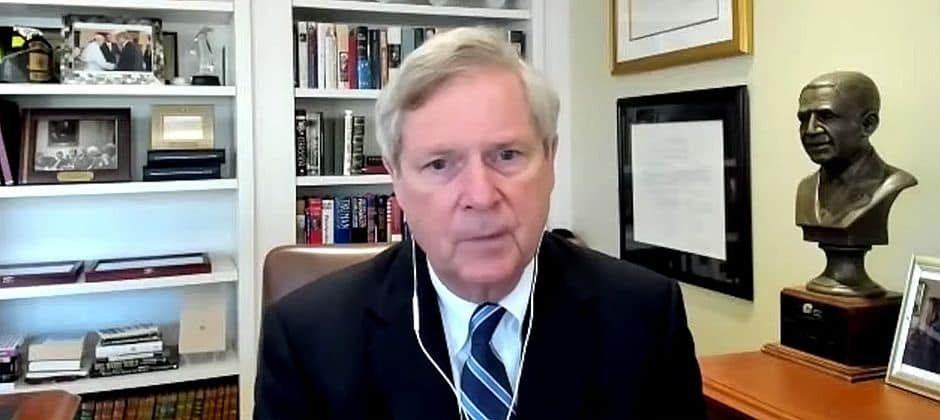Share this article
USFS to spend $285 million in infrastructure projects
Agriculture Secretary Tom Vilsack announced on Monday that the Biden administration will spend $285 million on over 500 infrastructure projects in national forests and grasslands to improve public access and use of the lands.
“Our forests and grasslands are an incredibly important resource and treasure that we have in this country, and we need to continue to invest in preserving and protecting and expanding these opportunities,” Vilsack said in recorded remarks for the plenary of the virtual 86th North American Wildlife and Natural Resources Conference.
Funding for the projects would come from the National Parks and Public Land Legacy and Restoration Fund. Part of the 2020 Great American Outdoors Act, the fund is sustained through 2025 using federal energy development revenues.
“It’s an indication of our commitment to growing and expanding opportunity in the great outdoors,” Vilsack said.
According to a USDA press release, 2021 projects will address improvements to recreation facilities, visitor centers, dams and trails and aim to increase public access by restoring and repairing roads, trails, bridges, tunnels and parking areas.
Vilsack also said the Agriculture Department is emphasizing Farm Bill programs designed to promote conservation practices on agricultural lands, including the Conservation Reserve and the Conservation Easement programs. The department has extended the sign-up for the Conservation Reserve Program, which protects less productive farmland for conservation purposes, and it is working to create incentives to encourage more participation in a program that is running 4 million acres below its cap, Vilsack said.
The efforts are part of the Biden administration’s “30 by 30” push to have 30% of U.S. land involved in conservation by 2030.
Vilsack also pledged to take steps to reduce the risks associated with chronic wasting disease, and he encouraged Congress to increase U.S. Forest Service funding to grapple with catastrophic wildfires.
“The reality is that, for far too many years, the Forest Service budget continues to be eaten away, if you will, by the costs — the tremendous costs — of putting out these horrific forest fires that we’ve experienced recently,” he said. “We need better forest management. To have better forest management, we obviously need more resources in the maintenance side of the budget and the management side of the budget. To do that, we need Congress to essentially understand and appreciate as it deals with infrastructure that there’s green infrastructure that requires investment over the course of time to better balance our ability to put fires out, but also to prevent them from occurring to begin with.”
Joining Vilsack in the plenary was Shannon Estenoz, principal deputy assistant secretary for fish, wildlife and parks at the Interior Department Their presentations came as the Senate prepares to consider Rep. Deb Haaland to lead the Interior Department. The New Mexico Democrat is expected to become the first Native American to join a presidential cabinet after the Senate Energy Committee advanced her nomination last Thursday.
“We’re still early in the new administration and we’re certainly looking forward to the secretary and other folks joining our team,” Estenoz said.
Like Vilsack, she emphasized infrastructure improvements, saying the department planned to undertake projects in national parks and wildlife areas, including efforts to deal with the effects of climate change.
“Understanding the impact of climate change to populations of fish and wildlife is a critical issue for us,” Estenoz said.
She said Interior is also working to better engage “diverse stakeholders across the country,” improve relationships with Native Americans, and address inequities in public land use.
“We want to partner with states and local governments to address this disparity and in doing so make the outdoors safe and welcoming for people of all backgrounds and abilities,” she said.
Gloria Tom, director of the Navajo Nation Department of Fish and Wildlife, spoke to what she called the “largely unrecognized” conservation efforts of tribes, including the restoration of black-footed ferret (Mustela nigripes), bison (Bison bison) and desert bighorn (Ovis canadensis nelsoni) populations. She pressed for the passage of the Recovering America’s Wildlife Act to increase funding for tribal conservation work.
“Tribal participation in RAWA is so critical,” she said. “It has the potential to provide the needed funding that we don’t have now.”
Hosted by the Wildlife Management Institute, the North American conference continues through Friday.
Header Image: Agriculture Secretary Tom Vilsack addresses the virtual 86th North American Wildlife and Natural Resources Conference. Credit: TWS








